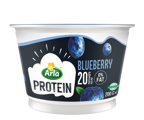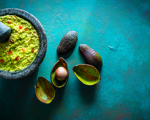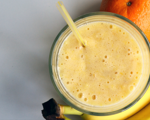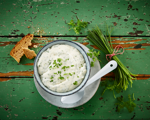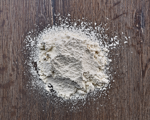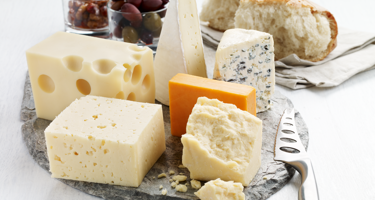
The protein content in cheese varies greatly depending on the type of cheese and the specific production method. In the below chart, we go through some of the most popular cheeses and take a closer look at the specific protein content.
Cheese is a well-liked dairy product containing two primary proteins: casein and whey, both of which are so-called complete proteins.
During the cheese-making process, milk is coagulated, usually by adding a starter culture and rennet, which causes the casein proteins in the milk to coagulate, forming curds, while the whey proteins remain in the liquid (the whey). The curds are pressed to expel more whey and compact them, forming the cheese.
In general, the more whey is expelled, the harder the cheeses will be. As such, most of the whey proteins are removed during the cheese-making process as the whey is discarded or repurposed. Some whey protein in cheese remains, though.
As cheeses age, they lose moisture, which makes them denser. Because the water content decreases while the amount of protein remains relatively stable, the relative proportion of protein in cheese increases as it ages.
This is why harder, aged cheeses usually contain more protein than softer, fresher ones: they contain less water and more concentrated protein.
Top 20 high protein cheeses per 100g
| Cheese | Protein |
|---|---|
| Parmesan | 35.8g |
| Pecorino Romano | 32.1g |
| Swiss (Emmental) | 28.4g |
| Gruyere | 27.9g |
| Jarlsberg | 27g |
| Comte | 27g |
| Manchego | 26g |
| Provolone | 25.6g |
| Cheddar | 25g |
| Fontina | 25g |
| Gouda | 24.9g |
| Havarti | 24g |
| Monterey Jack | 24g |
| Edam | 23.8g |
| Colby | 23.8g |
| Mozzarella (whole milk) | 24g |
| Ricotta (dry, part-skim) | 20g |
| Feta | 14g |
| Cottage Cheese (low fat, dry curd) | 11g |
Protein in cheddar
Cheddar originated in the English village of Cheddar in Somerset but is now produced globally. Cheddar is a hard, aged cheese that comes in a variety of flavours, ranging from mild to extra sharp, depending on the length of ageing. The ageing process can last anywhere from a few months to over a decade, which significantly impacts its flavour profile, texture, and protein content.
The level of protein in cheese of this type is relatively high due to its ageing process, which significantly reduces its moisture content. On average, cheddar cheese contains about 25.8 grams of protein per 100 grams, and protein makes up about 26.5 % of the total energy value, which makes it a high-protein cheese.
Its bold, often nutty flavour makes it versatile and widely used in many dishes, from cheeseburgers and sandwiches to casseroles and sauces.
Protein in feta
Feta, a brined cheese stored and aged in a solution of brine, is traditionally made with sheep milk, or a combination of sheep and goat milk, which gives it a distinctive tangy flavour and a creamy yet crumbly texture. Unlike hard cheeses, feta does not undergo a long ageing process, and it maintains a relatively high amount of moisture.
The protein content in feta cheese varies, but in general, a 40 % fat feta contains about 18.1 grams of protein per 100 grams, equalling 28.7 % of the total energy value.
Traditional feta is a popular cheese and is often used to add flavour to a wide variety of dishes like salads, pastas, and Mediterranean recipes.
Protein in cream cheese
Compared to hard, aged cheeses, cream cheese generally has less protein. It is a fresh cheese, meaning it does not undergo an ageing process. Instead, it is made by adding a lactic acid culture to cream or a combination of cream and milk, which causes the mixture to thicken and develop its signature tangy flavour. The result is a creamy spread with a high moisture content.
As already mentioned, the protein content varies depending on the brand and specific product, and since there are many variations of cream cheese, the protein content varies greatly within this category. For example, a 30-40 % cream cheese contains about 10.4 grams of protein per 100 grams, meaning that protein contributes 27.8 % of the total energy value. At the opposite end of the spectrum, a 70 % cream cheese contains about 9.6 grams of protein, which is close to the other one, but due to, among other things, the higher fat content, protein “only” constitutes 10.5 % of the total energy value.
Cream cheese is often paired with other protein sources such as avocado and chicken in a bagel or sandwich, and it can also be added to, for example, stews and pasta sauces to make it extra soft and creamy.
Protein in goat cheese
Goat cheese is a fresh cheese, which means it does not undergo an extended ageing process. It is crafted using goat milk, which lends a distinctively tart flavour and smooth texture with a significant amount of moisture.
Protein in cheese of this type can vary somewhat, but on average, it ranges from 17.8 grams per 100 grams in soft goat cheese to 21.8 grams per 100 grams in hard goat cheese. This gives an energy contribution from protein of 22.9 % and 24.3 %, respectively, of the total energy value.
Goat cheese can enhance a multitude of dishes, such as salads, bread, and homemade pizza. It may be unknown territory to some, but we highly recommend including it in your everyday cooking – thanks to its great flavour, you will not be disappointed.
Protein in mozzarella cheese
Mozzarella is traditionally a southern Italian cheese made from buffalo milk. Nowadays, however, it is also commonly made from cow’s milk. It is a fresh cheese, recognised for its delicate flavour and smooth, elastic texture achieved by a unique process of stretching and kneading the curds. Its moisture content is relatively high.
Depending on the specific type of mozzarella, it usually contains about 24.1-28.9 grams of protein per 100 grams, and protein makes up around 30.2-42.2 % of the total energy value, making mozzarella another high-protein cheese.
Mozzarella is renowned for its mild flavour, versatility, and excellent melting properties, making it a favourite topping for pizza and a key ingredient in dishes like lasagne and Caprese salad.
Protein in parmesan
Parmesan is a hard, granular cheese that originated in Italy. It is made from unpasteurised cow’s milk, often partially skimmed, and is renowned for its rich flavour and distinctive crystalline texture. Parmesan undergoes a long ageing process, typically between 12 and 36 months, which contributes to its complex, umami-rich flavour profile. The ageing also reduces the moisture content, resulting in a high(er) protein concentration.
It contains about 33.6 grams of protein per 100 grams, and protein constitutes 38.4 % of the total energy value. As mentioned earlier, the values may vary from product to product.
Parmesan is often grated or shaved over dishes to enhance flavour, and it is a staple in many Italian recipes.

Explore protein content in other dairy products
Related Articles
Looking to learn about protein content in different foods? Explore our comprehensive guides:

